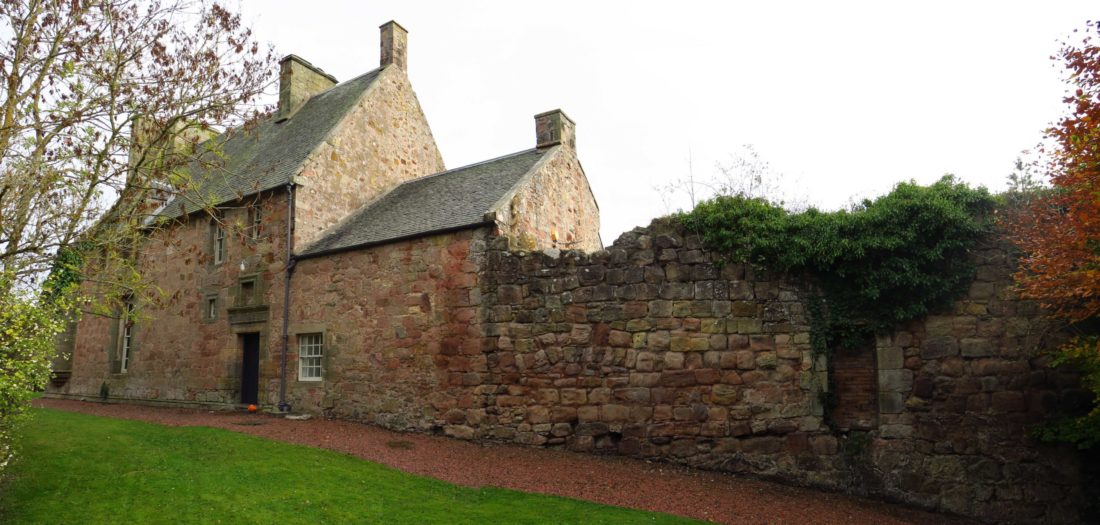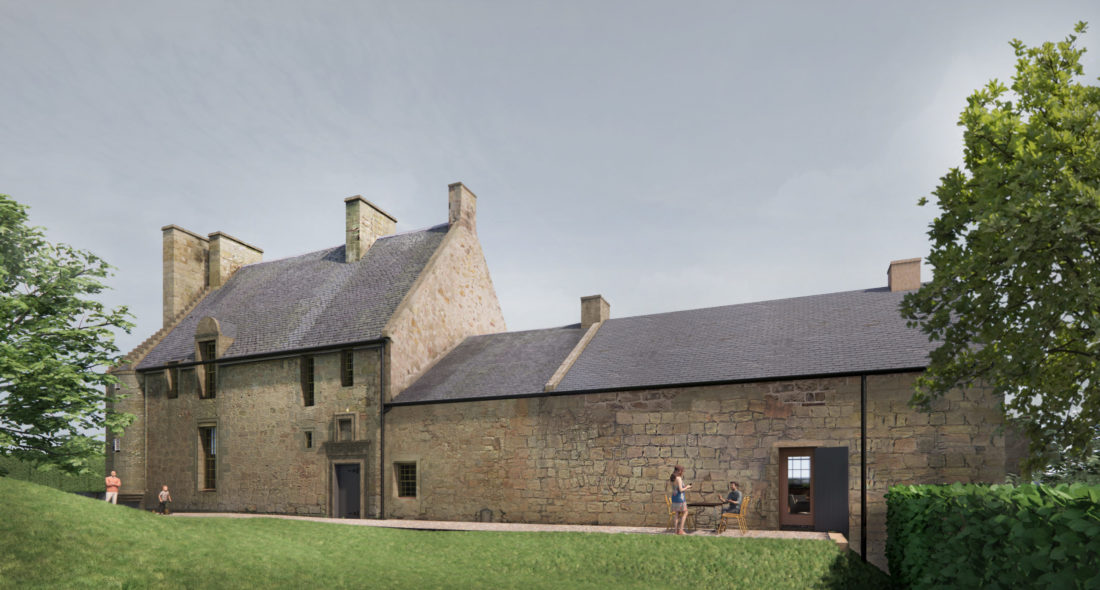A major programme of restoration and repair at one of Midlothian’s most historic sites is being proposed. Applications for planning, listed building and scheduled monument consent for work at Rosslyn Castle have been submitted to Midlothian Council and Historic Environment Scotland this week by Rosslyn Chapel Trust.
Rosslyn Castle, just a short walk from Rosslyn Chapel, was built by the St Clair family and the oldest parts date back to the early 14th century. The Castle has had a turbulent history, suffering from a serious fire in the 15th century, severe destruction in the 16th century during the ‘Rough Wooing’ and further attack by the Cromwellian army, led by General Monk, in the 17th century. Although much of the site is ruinous, the East Range, developed as a domestic residence and completed in 1622, is still partly occupied and let as holiday accommodation. However, some parts of the East Range, the former Great Hall and Tower, have remained in a ruinous state, leading to further deterioration including to the three levels of vaults below ground level.
The programme of work seeks to reintegrate the ruinous and habitable parts of the East Range to secure its long-term future and provide more resilience in the context of climate change and increased rainfall, which is having an increasingly detrimental impact of the building’s historic fabric. Following a study to determine the best approach to consolidation and protection of the vulnerable masonry, it was concluded that a permanent roof would be the most sustainable and appropriate approach. This would cover the former Great Hall, to protect important masonry carvings, and the three levels of vaults below, allowing a new kitchen and living area to be created at ground level and an additional bedroom to be located in the former Tower. The applications also detail other works including comprehensive fabric repairs, particularly to the south elevation, where the sandstone directly under the ruined part of the Great Hall suffers significantly from a lack of pointing and masonry erosion. They also include proposals to upgrade the energy efficiency of the whole building and the development of a new sustainable heating strategy.
Rosslyn Castle is category A-listed, recognising its architectural and historic character and its grounds are designated as a Scheduled Monument. The Castle is in the care of Rosslyn Chapel Trust and has provided self-catering accommodation, through a partnership with The Landmark Trust, since the 1980s.
Ian Gardner, Director of Rosslyn Chapel Trust, said: ‘This proposed project will help to prevent the further deterioration of important parts of the Castle’s East Range, both above and below ground, which have suffered from continuous water ingress over centuries. It will also improve the quality of the experience for guests staying here and secure the long-term future of one of Midlothian’s most historically significant buildings.’
Rosslyn Chapel Trust has commissioned Page\Park as architects to develop the proposals for Rosslyn Castle. Karen Nugent, of Page\Park, said: ‘It is unusual that a ruin and habitable house coexist within the same footprint of a bigger building and, through this work, we will reintegrate both elements, following guidelines of leading conservation bodies in Scotland, the United Kingdom and Europe. We are delighted to be appointed to work on this exciting project, which will bring enormous benefits to the building for generations to come.’
Rosslyn Chapel Trust is celebrating its 25th anniversary this year. During this period, it concluded a 17-year programme of conservation at Rosslyn Chapel in 2014 and completed a two year programme of conservation and repair at Collegehill House, the former 17th century inn which stands at the entrance to the Chapel, in 2018. The Trust is a charity, registered in Scotland, number SC024324.



